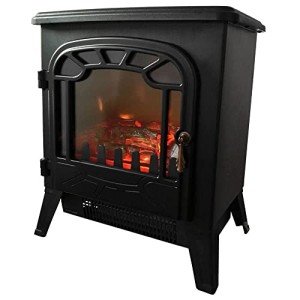5 Things That Everyone Doesn't Know About Cheap Fireplace UK

Affordable Fireplaces in the UK: A Comprehensive Guide
Fireplaces have long been a focal point of heat and convenience in homes, supplying a cozy atmosphere during the colder months. However, with many households facing monetary restrictions, the demand for cheap fireplaces in the UK has actually gotten substantial traction. This post aims to check out various economical alternatives, aspects to think about when buying, setup details, and maintenance ideas to ensure longevity and security.
Kinds Of Cheap Fireplaces
When looking for a budget-friendly fireplace, several types are available that accommodate various budgets and home styles. Below is a list of some typical classifications of economical fireplaces:
1. Electric Fireplaces
- Overview: These fireplaces use electrical energy to create heat and imitate the appearance of genuine flames.
- Pros: No emissions, easy setup, and adjustable heat settings.
- Cons: Higher electric costs, not suitable for all aesthetic appeals.
2. Gas Fireplaces
- Introduction: Rely on natural gas or lp to produce genuine flames.
- Pros: Efficient heat output, instant warmth, and typically included push-button controls.
- Cons: Requires gas line setup, which might sustain additional expenses.
3. Wood-Burning Stoves
- Summary: These traditional fireplaces burn wood logs to produce heat and ambiance.
- Pros: Lower running expenses if wood is sourced locally, authentic experience.
- Cons: Requires more maintenance, a chimney system, and sourcing firewood.
4. Bioethanol Fireplaces
- Summary: Use bioethanol to create real flames without being linked to a flue.
- Pros: Portable, simple to set up, and produces little smoke.
- Cons: Limited heat output and can be pricey if utilized often.
5. Inserts and Surrounds
- Introduction: Inserts or surrounds are usually added to existing chimney spaces to modernize or enhance a fireplace.
- Pros: Cost-effective ways of upgrading an old fireplace, increased performance.
- Cons: Initial installation cost may vary, and not all homes work.
Table 1: Comparison of Cheap Fireplaces
| Type | Typical Cost (₤) | Operating Cost | Setup Difficulty | Visual Appeal |
|---|---|---|---|---|
| Electric | 100 - 500 | Low | Easy | Moderate |
| Gas | 300 - 700 | Moderate | Moderate to Difficult | High |
| Wood-Burning | 150 - 600 | Low to Moderate | Moderate to Difficult | High |
| Bioethanol | 200 - 800 | Moderate | Easy | High |
| Inserts/Surrounds | 200 - 1,000 | Differs | Moderate | High |
Factors to Consider When Choosing a Cheap Fireplace
When choosing a cheap fireplace, numerous aspects must be taken into account to guarantee that the purchase aligns with your home's needs and budget plan:
Space and Size
- Examine the size of the room where the fireplace will be installed. get more info might need more powerful heating choices, whereas smaller areas may benefit from compact electric or bioethanol models.
Fuel Type
- Pick in between electric, gas, wood, or bioethanol based on accessibility, individual preference, and regional regulations regarding emissions and security.
Setup Requirements
- Consider whether the fireplace requires comprehensive installation work, such as venting and chimney building and construction, which can significantly increase costs.
Expense of Operation
- Compute the continuous fuel or electrical power costs to maintain heat throughout the winter season.
Aesthetic Design
- Choose a fireplace that complements the existing decor of your home, whether modern, traditional, or rustic.
Upkeep Tips for Your Fireplace
When a cheap fireplace is installed, correct maintenance is critical for security and durability. Here are some important maintenance suggestions:
- Schedule Annual Inspections: For gas and wood-burning fireplaces, it's vital to have a yearly inspection to look for gas leaks or blockages in the chimney.
- Routine Cleaning: Dust and preserve electric fireplaces and clean out ash from wood-burning stoves to prevent fire risks.
- Correct Fuel Storage: For wood-burning stoves, store fire wood in a dry location to make sure effective burning and avoid mold development.
- Use Quality Fuel: Always use suitable fuel for gas and bioethanol fireplaces to prevent excess soot and emissions.
- Install Carbon Monoxide Detectors: For gas or wood-burning models, set up detectors to make sure that any leak of hazardous gases is quickly recognized.
Frequently asked questions
1. What is the least expensive type of fireplace?
Electric fireplaces are usually amongst the most budget-friendly options, using a variety of rates that can fit most budgets.
2. Can I install a fireplace myself to conserve cash?
While some electric and bioethanol fireplaces can be easily set up without professional assistance, gas and wood-burning designs generally need setup by a certified professional to make sure safety.
3. For how long do electric fireplaces last?
Electric fireplaces can last for several years with appropriate care, typically around 10-15 years, depending upon usage and the quality of the system.
4. What is the most efficient fireplace?
Gas fireplaces tend to be the most efficient, offering instant heat with regulated emissions.
5. How do I understand if my fireplace is safe to utilize?
Regular assessments, appropriate cleansing, and making sure that there are no blockages or leakages can assist maintain security in any kind of fireplace.
Discovering a cheap fireplace in the UK does not imply jeopardizing on style or safety. With a large variety of alternatives readily available-- from electric to wood-burning models-- house owners can delight in a warm and inviting ambiance without breaking the bank. By comprehending the different fireplace types, thinking about necessary elements before purchasing, and preserving the fireplace properly, people can invest carefully for several years of enjoyment.

